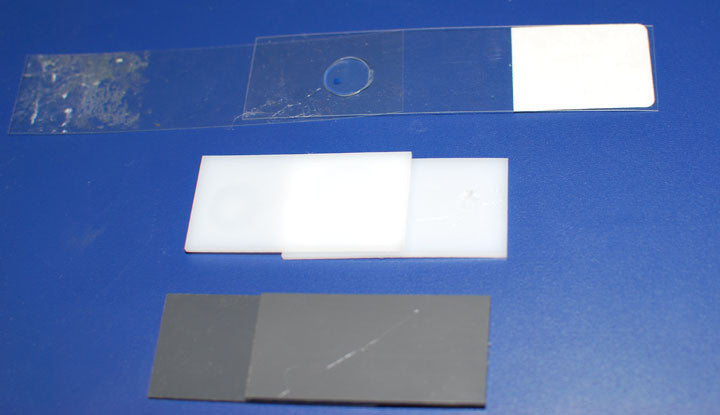SuperTAC 500 Plastic Bonding Hot Melt Sticks by Infinity Bond
Plastic is one of the hardest surfaces to bond to but we have found a hot melt glue stick that will bond polyethylene, PVC and PET. This hot melt is commonly used for PE boxes and display units. It has an open time of 28 seconds and a set time of 17 seconds. We have had numerous customers find success in their applications with these sticks and have even put the product to the test in the Hotmelt.com lab.
Overview
These Plastic Hot Melt Sticks are a cloudy white in color and come in 1/2" sticks. These glue sticks can be dispensed by any 1/2" standard temperature glue gun. This hot melt is perfect for bonding PP, PE, PET, and PCV and also bonds porous materials.
Bonding Materials PVC, PE, PET

Bonding Materials Composition Overview:
Plastics also known as synthetic resins made from a wide range of organic polymers that are can be molded into a shape when soft. Our test of these Plastic Hot Melt Sticks used PVC (Polyvinyl chloride), High Density PE (Polyethylene) and PET (Polyethylene terephthalate).
PVC (Polyvinyl chloride): is a thermoplastic that is made up of 43% carbon and 57% chlorine. PVC has excellent fire resistance and has self-extinguishing properties. This plastic is used for garden hoses, electrical wire insulation, vinyl flooring, roof gutter, vinyl flooring, children's doll, wrapping film, etc.
High Density PE (Polyethylene): this thermoplastic material is the most commonly used bottle caps, containers, Tyvek, plastic bags, water pipes, plastic lumber, etc.
PET (Polyethylene terephthalate): this thermoplastic offers a good barrier against oxygen and carbon dioxide. This material is often used for bottled water, trays for oven use, oven foils, fleece, etc.
High Density PE, PET, and PVC Bonded

Results:
We definitely stand by these Plastic Hot Melt Sticks by Infinity Melt. During our test we allowed the hot melt to set for one minute before trying to separate anything. It worked best in our test bonding PET to PET. We could not pull the two pieces apart nor twist them apart even with the small amount of hot melt we applied. The PVC and PE has similar results, we found that they did not the pull apart by hand with a small amount, but when twisted broke apart. We decided do a retrial on the PVC and PE with a larger amount of hot melt applied. The 2nd trial proved more successful in the twist test and the thicker plastics actually began to flex before the hot melt gave way.
The Plastics Hot Melt Sticks were successful except when extreme force was applied and the pieces twisted in opposite directions. We do feel that had we cover the area of plastic entirely in hot melt it would have been extremely difficult or impossible to twist apart by hand.

